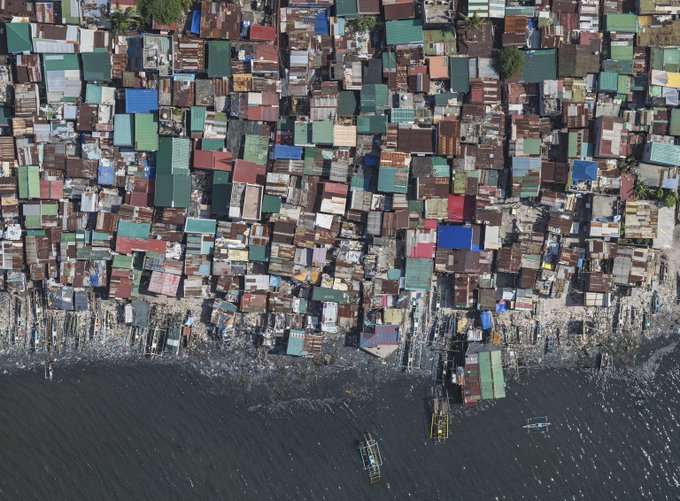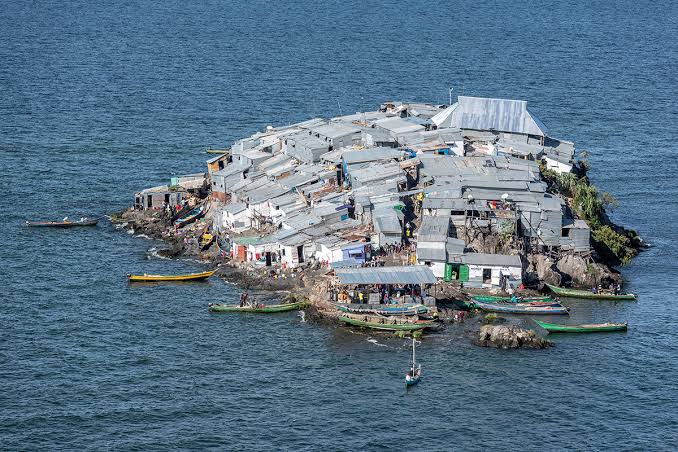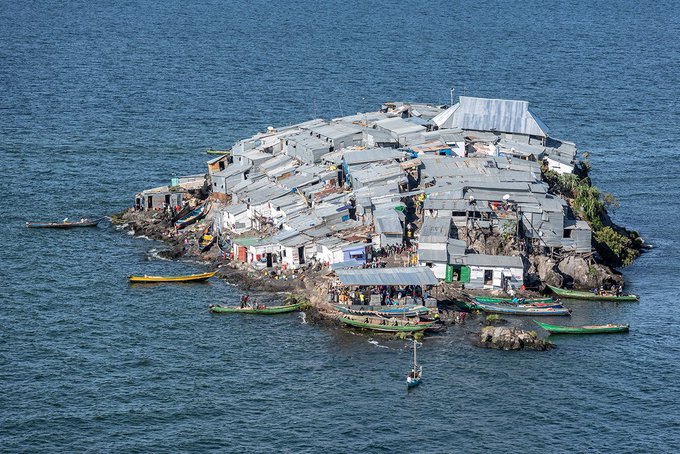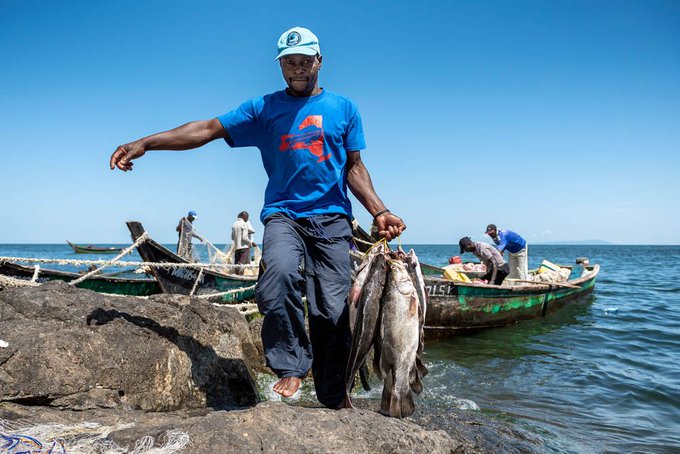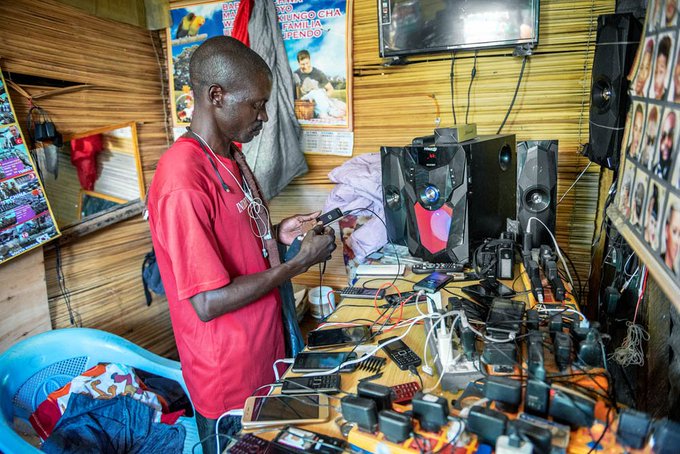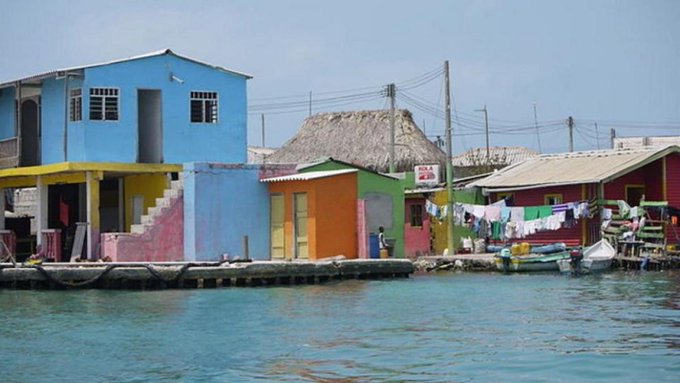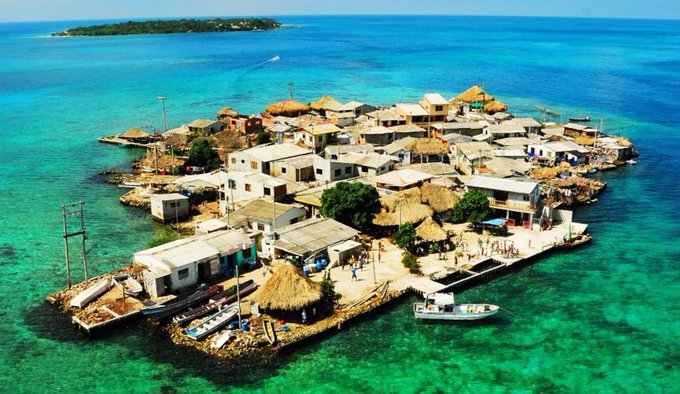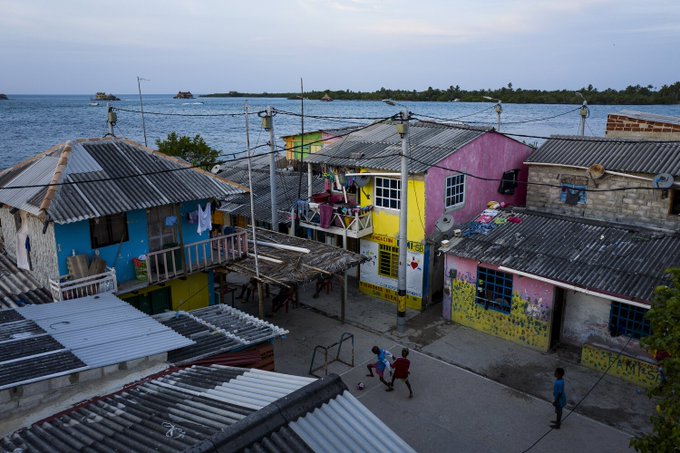Most Densely Populated Places On The Planet

July 24, 2025
•20 min read
How many people can live in one place, and what is it like there? Let's find out!
In 1804, the world population hit 1 billion for the first time ever. The world’s population has grown exponentially since then, hitting a staggering 8 billion people just 218 years later! What’s scary is that this trend is showing no signs of slowing down, and all those people have to live somewhere! Let's explore some of the most densely populated places in the world right now, and what it’s like to live there!
Hong Kong
Did you know that the city with the most Rolls Royces per person is Hong Kong? It’s no surprise there are so many of these luxurious rides around, while Hong Kong may be incredibly dense, it’s also incredibly rich, home to 96 billionaires, putting it in 2nd place on the list of cities with the most billionaires.
In 2023, the population hit 7.5 million and is expected to reach 8.5 million by 2041, with population density more than 17,000 people in a single square mile, for perspective, if you were to lay them out in a square grid, they’re only be 45 ft between each person. Ultimately, Hong Kong stands as one of the most urbanized places globally, with every single resident living in a city environment. All this clamoring for space must mean housing competition is pretty fierce, right? You bet. Hong Kong has earned its spot as one of the most expensive housing markets on the planet, outpricing even Seoul, Taipei, and Bangkok. According to a 2017 survey, the median home costs a staggering 18 times the median annual income, and that’s just the average. That means someone making the average salary of around $55,000 a year needs to stash away $990,000 just to afford a home. For the super-rich, this is peanuts. The less fortunate like the elderly, those suffering from addiction, and the mentally ill are consigned to living in coffin houses. These are tiny apartments often measuring just 3 ft x 6 ft, that's smaller than a Hong Kong prison cell and, if you can believe it, smaller than a standard US parking space.Drone captures photo of thousands of cars stuck on 50-lane highway in China yhoo.it/1ht6tQr
Shenzhen
The Chinese megacity of Shenzhen once looked very different. While you might think that all that development must have taken over 50 years, it took only 35 years! Back in 1980, Shenzhen had a population of 58,000. Today, it's home to 17.56 million people, crammed together at 23,000 per square mile, making it the most crowded city in all of China.
The staggering growth of Shenzhen can be seen in the photograph taken from Hong Kong’s Crest Hill in 1964, and retaken in 2015. Lowu border crossing is in the bottom right of image” buff.ly/2CnE24q #geography #urbangrowth #urbanlife #china #Shenzhen #urbandevelopment
More than 1,700 students take part in an open-air exam in China. More Editor's Choice photos: reut.rs/1H0VJlC
Damascus
The Syrian city of Damascus is one of the world’s most densely populated places, with over 58,000 people per square mile, more than Shenzen & Hong Kong combined! Damascus is also one of the oldest continually inhabited cities globally, being founded in the 3rd millennium BCE. That makes it about as old as the Pyramids!
When you read about Syria, what probably comes to mind is the terrible civil war that began in the 2010s. As a result, nearly a million domestic migrants from other parts of Syria fled to the capital, which explains its high population density. In 2020, 4,000 Palestinian refugees came to Yarmouk camp despite the largely destroyed public infrastructure. Due to being in the middle of a civil war, Damascus doesn't fare too well on the Global Livability Ranking. In 2022, it was listed as the least livable city on earth, scoring poorly on factors such as stability, healthcare, infrastructure, and education, like they didn't have it bad enough already. This has come at a cost to its population: in 2010, Damascene fertility rates were set to fall from around 2.5 children per woman, to 1.4 children by 2025. Young people are delaying marriage, as some want to finish their studies to secure a better life, while others aren’t set up to cover traditional marriage costs. The Civil War doesn’t help either. So perhaps Damascus won’t be on this list much longer? In spite of the turmoil, ordinary Damascus citizens carry on with life as best as they can. Take the Damascus Gate, for instance, it’s the world’s largest restaurant. It has over 6,000 seats and covers around 214,000 square feet, that’s three times as big as the White House! Probably has a more varied menu, too.Malé
The Maldives is the classic tropical paradise, a hub of luxurious resorts and beautiful beaches. But did you know that this idyllic haven could soon be underwater? The chain of islands that compose the Maldives are under threat from rising sea levels brought about by climate change.
Take Malé, not only the most populated island in the Maldives but also the 5th most densely populated island globally. Malé’s population of 252,000 people spread over the 3.2 square mile island means on average 59,000 people are squeezed into a single square mile. That would be like 163 soccer players crowded onto a single field at once! Malé is a bustling hub of trade and tourism, connecting Sri Lanka and India through trade routes. The population has surged due to job opportunities, better healthcare, education, and improved infrastructure. But with trade, comes trash. Every Malé tourist uses 132 gallons of water and produces around 8 lbs of waste a day! Back in 1992, an artificial island, Thilafushi, was created to help solve Malé’s refuse problem, with more than 363 tons being dumped on this stinky isle daily. Unfortunately, the future of Malé isn’t looking too bright. The Maldives boasts the lowest elevation of any country worldwide, 80% of its land sits less than 3 ½ feet above sea level. As these levels rise, the islands will become more cramped with people whose homes have been washed away.La futurista isla que construye Maldivas para sobrevivir al imparable aumento del nivel del mar ► ow.ly/u8D750BIFbl
Dhaka
There’s nothing like driving along, tunes blaring, wind in your hair. But if you’re in the Bangladeshi capital of Dhaka, your driving experience will be a lot less pleasant, as the traffic there is the 5th worst in the world. Drivers have to battle with over 1.8 million vehicles on a labyrinth of roads, with a car’s average speed being just 4.3 mph. This is expected to drop to a snail’s pace of 2.4 mph by 2035, meaning it’ll be quicker to walk than drive!
Port-au-Prince
The Caribbean country of Haiti has a current population somewhere around 11.45 million, and many of those citizens have had a rough time for the last 250 years. This country has been hit by invasions, unpayable debts, natural disasters, and political instability. And nowhere is the nation’s turbulent history more evident than in the its capital, Port-au-Prince.
In 2022, its population was estimated to be 1.2 million, meaning some 71,000 people are squeezed into every square mile. That’s more than two-and-a-half times the population density of even New York City. Rewinding to January 2010, a monstrous 7.0 earthquake levelled much of Port-au-Prince, costing the lives of over 200,000 people. Homes were shattered and survivors found themselves making do in overcrowded slums. On July 7th, 2021, Haiti’s president Jovenel Moïse was assassinated amid protests over rising fuel prices. Since January 2023, the country has lacked a single democratically elected government official, and it’s unclear when the next presidential election will be held. As a result, around 150 dangerous gangs control more than 60% of the capital.Bnei Brak
If you head over to Israel, get ready to see museums galore! Israel holds the record for the most museums per capita out of any country. That’s not the only thing it’s got a lot of, though, there are scores of people, too. Israel has a population of 9.3 million, and it’s predicted that by 2065, that number will be as high as 20 million, making it the most crowded country in the OECD; the Organization for Economic Co-operation and Development, to us non-geopolitical types, that’s some 38 countries that make up the Western world.
Nowhere is Israel more populated than in the city of Bnei Brak. In 2022, the population density was listed as 78,000 per sq. mile. About 95% of the community are Haredi, which means they’re ultra-orthodox jews. If there’s one thing Israelis can be proud of, it’s that they’re one of the most fertile countries in the West. On average, haredi parents have just under 7 children. You might be thinking, how do you have just under 7 children? Do people have half children? No, that’s just how averages work. Anyway, like a lot of places mentioned so far, Bnei Brak struggles with poverty, and is one of the poorest cities in the country.Muri Israel ubwoba ni bwose ko abatari bake bashobora kwandura #Covid_19 . Ibi ni ukubera abarenga 20,000 barenze ku mabwiriza ya leta bakajya gushyingura umwe mu bayobozi bakuru b'idini rya orthodox iriya ndwara yishe ari we Rabbi Meshulam Dovid Soloveitchik w'imyaka 99 y'amavuko
Manila
You may have heard of the Thrilla in Manila, that epic match between Muhammad Ali and Smokin’ Joe Frazier that was one of the most hotly anticipated boxing matches of the century. What most viewers didn’t realize was that was about as hard as most Manilla citizens have to fight on a regular basis just to grab a parking space. As of 2023, the population of the Philippines’ capital is 14.6 million, squashed into roughly 16.56 square miles, that’s 111,000 people crammed into each square mile!
Staggering views of #Manila ´s insanely #crowded #slums : 36,000 people per square mile. #Photography : #BernardLang wired.com/2017/03/bernha…
The same positivity can’t be applied to Quezon City Jail, a 5.9-acre prison built for 800 prisoners, but as of 2016, houses 3,800. It makes the rest of Manila look like a national park.
フィリピンの刑務所ってもとからこんなだから、急にたくさん捕まえてももう入れようがないんだよねきっと。
Migingo
In 2016, Migingo, a tiny little island, was the scene of an international squabble between Kenya and Uganda! Migingo’s story starts in 2004, when one eccentric fisherman who lived on the island caught an unbelievable amount of fish. The island itself is located in Lake Victoria, whose waters are precariously shared by Uganda, Kenya, and Tanzania. Word of the catch eventually spread, reaching Kenya and Uganda.
Migingo island on Lake Victoria on the border between Kenya and Uganda, is a disputed territory between both countries. It covers less than half a football pitch, but over 500 people live on the fishing island. Nobody lived there in the early 2000s.
The tiny African Migingo Island — in pictures aje.io/ad646
Santa Cruz Del Islote
Set sail off the shores of Colombia's Gulf of Morrosquillo, and you'll stumble upon a tiny island named Santa Cruz del Islote. It's small, just 2.4 acres. That’s not even as big as two Football fields, less than 0.04 square miles, yet it's bustling with life.
Santa Cruz del Islote, Colombia 🇨🇴 - Famous 2-acre island, known as one of the most densely populated in the world.
Dharavi
Let's hop over to India, the most populated country in the world, and head to Mumbai, one of the most populated cities in the world. And within this jammed city is the jammiest district of all, Dharavi. It's India's largest slum, housing around 1,000,000 people, with over 917,000 individuals per square mile.
In Dharavi, many of the houses lack running water, often more than 10 people share a single room, and more than 80 people can share a single toilet. Open sewers are all too common, leading to high disease rates that include cholera, diphtheria, tuberculosis, and typhoid. Even with its challenges, life in Dharavi isn't all bad. Community spirit is strong, and people come together for everything, from washing dishes to doing laundry, in communal spaces. This unity might be a reason why, surprisingly, crime rates here are so low. Don’t think that the Dharavi children are slackers either. School attendance is high, making Dharavi the most educated slum in the country with a literacy rate of 69%, only 10% lower than the USA. Well, that’s eye opening.Home to 421 bright minds, SSRVM Dharavi is a school that is changing the educational landscape of the largest slum in Asia. Want to be a part of the change? Donate here: ssrvm.org/donate/ #InternationalLiteracyDay #EducationMatters #EducationForAll
Kowloon Walled City
Not too long ago, in an enclave of Hong Kong, was a city like no other, Kowloon Walled City. From the outside, you’d think it was a bunch of buildings built into each other, and you wouldn’t be wrong. This city complex was 6.4 acres in size, but packed inside were 50,000 people. That’s around 4.97 million people per square mile, nearly five times the density of even Dharavi.
Kowloon's history begins in 1843 during the Qing dynasty. The walled city was erected as a defense against British influence. After the Qing dynasty's fall, the British claimed ownership of the city but left it untouched. After World War II, waves of refugees flooded the Kowloon peninsula, including those fleeing the Chinese Civil War. By 1947, the city housed over 2,000 squatters. Unrestrained by any architectural rules, people began building on top of pre-existing structures left, right and center.Eventually, the city morphed into 350 interconnected high-rise buildings, 10 to 14 stories high, each a mishmash of materials, sizes, and heights. Private landlords offering low rents attracted entrepreneurs, leading to hundreds of factories popping up within the complex, churning out products that were exported across the globe.













